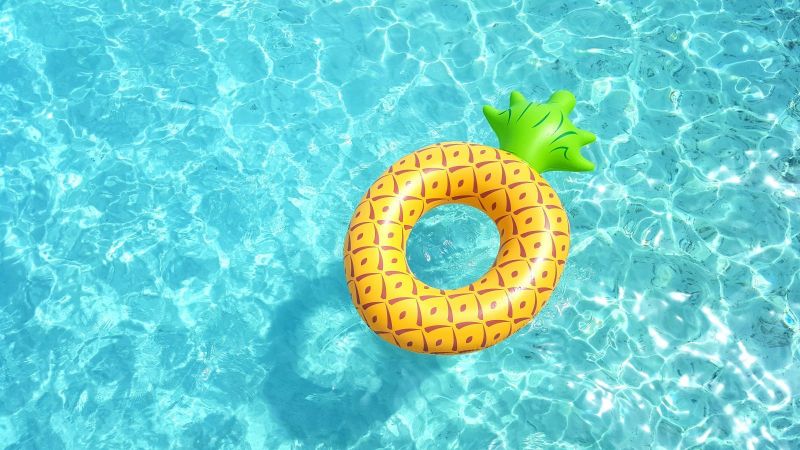Sodium chloride is not manually added to a pool. The process is done using a piece of equipment known as a chlorine generator. This apparatus uses sodium chloride to produce chlorine in the swimming pool. It releases chlorine into the pool after sodium chloride is added to it. Most pool owners don't know the amount of salt needed to be added to the water. However, the amount of salt to be added varies according to the size of the pool, and it is done after installation, after water drainage, or during in-season refills.
What Amount of Salt is Required to Maintain a Chlorinated Pool?
The recommended salt level is 3200 parts per million (ppm); however, it may range from 2700 to 3400 ppm. During the adding process, a test kit is required. The water level may drop due to various circumstances, and should it happen, you are required to get an estimate of gallons of water lost to know the amount of salt to be added after the lost water is replaced.
Information About Chlorine Generators
This machine transforms table salt in a process called electrolysis to come up with hydrochloric acid and sodium hypochlorite. This combination changes the salt into low concentrated chlorine, which cleans and sanitizes the pool. This generator is automated because it can only produce chlorine if you activate the pool's circulation system. It works by taking in large quantities of sodium chloride, which dissolves to form the soluble chlorine.
Benefits of a Chlorine Generator and a Saltwater Pool
This generator has many benefits compared to traditional pool treatment methods. The ancient pool chemicals, such as chlorine, could burn eyes and had powerful smells. This chlorine generator is advantageous because it creates algae and bacteria-free pool, the saltwater pool. Modern saltwater pools are easy to manage and are skin and eyes-friendly. Their PH can be easily balanced using accustomed chlorinated options.
Salt cannot easily vaporize or diminish from the water, so it is habitually recycled. It would be best to minimize the addition of salt to maintain an ideal PH level. An initial investment into a chlorine swimming pool is usually significant. Later during maintenance, the costs are considerably minimized, meaning that in case one plans to use the pool for commercial purposes, it will act as a substantial investment.
How to Maintain a Chlorine Generator and a Saltwater Pool
Saltwater pools have low maintenance costs, but they also need to be taken care of to offer a long-term service. For instance, when a chlorine generator is well maintained, it can last for a minimum of three years and up to ten years. The following tips explain how to lengthen the life of a chlorine generator and the services offered by a saltwater pool.
- Ensure that your pool's filtration structure and the chlorine generator are thoroughly cleaned after dozens of swimming sessions.
- Minimize the regular cleaning of the generator to avoid wear and tear. You can clean it when during general cleanings.
- Maintain the required salt levels as excessive addition can lead to corrosion of the generator's apparatus, and low addition of salt will negatively affect the PH of the water.
- Regular monitoring of calcium levels.
- When there is a heavy storm, you are advised to turn off the pool's filtration structure.
- Put your investment in a reverse polarity chlorine generator.
Other Chemicals Needed in a Pool
The chlorine generator only adds chlorine to the pool, meaning that you must put other essential chemicals manually into the pool. A chemical called cyanuric acid (CYA) is sourced from manufactured chlorine tablets. This chemical can avoid the vaporization of chlorine, increasing the efficiency of generated chlorine. It also lowers the number of salt cells since it produces low amounts of chlorine.
Investing in a saltwater pool is economical as it saves you significant amounts. You will not have to visit a medical facility with damaged skin or eyes due to pool water; therefore, consider venturing into one.




